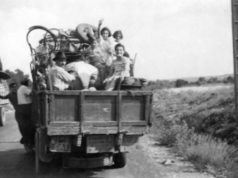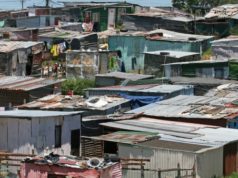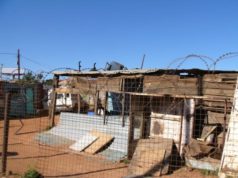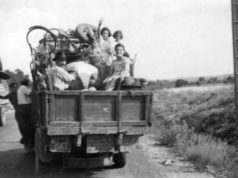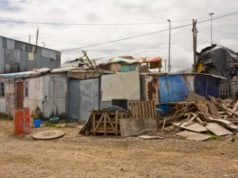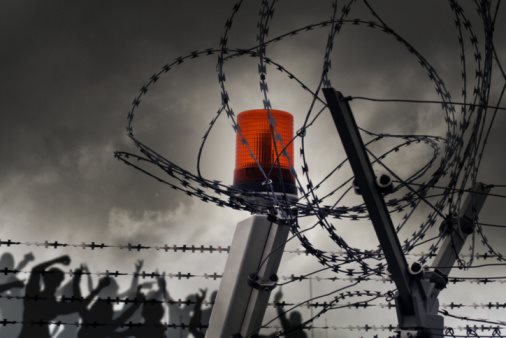
Cold War Refugees: The Impact and Legacy of Forced Displacement
Introduction
The Cold War was a period of great geopolitical tension between the United States and the Soviet Union that lasted from the end of World War II until the collapse of the Soviet Union in 1991. The conflict was characterized by a wide range of economic, political, and military actions, but one of its most devastating impacts was the displacement of millions of people from their homes. This article will explore the impact and legacy of Cold War refugees, including the reasons for their displacement, the challenges they faced, and the ways in which they contributed to shaping the world we live in today.
Reasons for Displacement
The displacement of millions of people during the Cold War occurred for a variety of reasons. The Soviet Union’s expansionist policies in Eastern Europe led to the forced relocation of ethnic Germans, Poles, Hungarians, and other minorities. Similarly, the Chinese Communist Party’s rise to power in 1949 resulted in the exodus of hundreds of thousands of Chinese people to Taiwan, Hong Kong, and other countries. The Korean War (1950-1953) resulted in the forced relocation of millions of Koreans from the north to the south, as well as the flight of refugees to other countries.
Another major cause of displacement during the Cold War was political repression. In the Soviet Union, Eastern Europe, and China, citizens who were perceived as a threat to the government were sent to labor camps or executed. Dissidents, artists, and intellectuals who spoke out against the government were also often forced to flee their countries. For example, after the Hungarian Revolution of 1956, thousands of Hungarians were forced to flee their country to escape political persecution.
In addition to these political and military causes of displacement, economic factors also played a key role. For example, in the wake of World War II, many Europeans were left homeless, hungry, and without a means of supporting themselves. The Marshall Plan, which provided economic assistance to Western European countries, helped to rebuild the region’s infrastructure and stimulate economic growth. However, even with this aid, many Europeans were still unable to find work and feed their families, leading them to seek opportunities elsewhere.
Challenges Faced by Cold War Refugees
The challenges faced by Cold War refugees varied depending on their country of origin, their age and gender, and the conditions of their displacement. However, some common challenges include the following:
– Physical and emotional trauma: Many refugees experienced violence, injury, and death during their displacement, which left them with physical and emotional scars that lasted for years. The trauma of displacement and the loss of loved ones often led to depression, anxiety, and other mental health issues.
– Language and cultural barriers: Refugees who moved to other countries often faced language and cultural barriers that made it difficult to integrate into their new communities. They had to learn a new language, adapt to new cultural norms, and deal with discrimination from locals who viewed them as outsiders.
– Economic hardship: Many refugees struggled to find work and support themselves and their families, particularly in countries with high unemployment rates and limited social services. They often lived in poverty and had to rely on the generosity of charities and government programs to survive.
– Legal status: Some refugees were able to obtain legal status in their new countries, but many others were forced to live in limbo, without the rights and protections afforded to citizens. They were often subjected to arbitrary detention, deportation, and other abuses by authorities.
Contributions of Cold War Refugees
Despite the many challenges they faced, Cold War refugees also made significant contributions to their new communities and to the world as a whole. Some examples include the following:
– Cultural enrichment: Many refugees brought their own cultural traditions and practices to their new countries, enriching the local culture and contributing to a sense of cosmopolitanism. For example, German and Jewish refugees in the United States helped to revitalize the country’s cultural and intellectual scene in the 1940s and 1950s, while Cuban refugees in Florida have had a significant impact on the state’s economy and political landscape.
– Scientific and intellectual breakthroughs: Many refugees were highly educated and skilled individuals who made significant contributions to science, medicine, and other fields. For example, physicist Albert Einstein fled Nazi Germany in 1933 and went on to make groundbreaking discoveries in theoretical physics. Polish mathematician Stanislaw Ulam, who fled to the United States in 1939, helped to develop the first hydrogen bomb.
– Political activism: Many refugees became active in political movements aimed at promoting democracy and human rights. For example, Aung San Suu Kyi, who won the Nobel Peace Prize in 1991, was forced to flee Burma in 1988 and spent years in exile before returning to her homeland and leading the pro-democracy movement. Similarly, many Cuban exiles have played a significant role in the fight for democracy and human rights in their home country.
– Economic growth: Many refugees have started their own businesses and contributed to the economic growth of their new communities. For example, Vietnamese refugees in the United States have become successful entrepreneurs, particularly in the hospitality and retail sectors.
Legacy of Cold War Refugees
The Cold War may be over, but its legacy lives on in the millions of people who were displaced by the conflict. Today, there are still millions of refugees around the world who have been forced to flee war, political repression, and economic hardship. The experiences of Cold War refugees can provide valuable lessons for policymakers and humanitarian organizations alike.
One of the most important lessons is the need for compassion and understanding when dealing with displaced people. Too often, refugees are viewed with suspicion and hostility by the countries they flee to. However, as the examples of Cold War refugees demonstrate, they can make significant contributions to their new communities if given the chance.
Another lesson is the importance of international cooperation in addressing the challenges of forced displacement. The refugee crisis is a global problem that requires a global solution. Governments, NGOs, and intergovernmental organizations must work together to provide assistance to refugees and address the root causes of displacement.
Conclusion
The displacement of millions of people during the Cold War was a tragedy on a global scale. However, despite the many challenges faced by refugees, they have also made lasting contributions to their new communities and to the world as a whole. Today, as the refugee crisis continues to grow, it is important to remember the lessons of the Cold War and to work together to find solutions that promote compassion, understanding, and international cooperation.
The Cold War is usually conceived of as a war of ideas and the building up of weapons rather than a “hot war,” such as World War II that involved the actual use of weapons and the total surrender of the enemy. While the United States and the Soviets never traded blows in the Cold War, the efforts of Americans and other Western powers to contain Communism as well as the efforts of individual states to emerge from the shadow of Soviet oppression created a fair amount of political unrest and instability just the same.
While the 1951 U.N. Convention Relating to the Status of Refugees was an important step in defining the rights of refugees everywhere, it was still incomplete prior to the adoption of protocols to amend it. Before these amendments, it only applied to people who were displaced from their countries of origin and those who became eligible before the definition was founded.
However, the events of the Hungarian Revolution which popular media helped to etch in the minds of the world audience would provide a serious challenge to the concept of a refugee, due to the sheer numbers of displaced Hungarians.
The whole enterprise was set in motion by the violence surrounding a 1956 anti-Soviet student protest in Budapest, Hungary’s capital, in which State Security Police opened fire on the crowd. Not only did the students respond with force, though, but the revolution soon spread across Hungary and the united Hungarians actually drove out the Soviet forces that had sought to intercede. Before the new government could get too settled, the Soviets returned to stamp out the revolution as violently as it began.
Aside from capturing the hearts of many onlookers, refugee policy makers were also affected by the plight of some 200,000 Hungarians that ran from the Soviet occupation of their country. The UNHCR’s prima facie definition of refugee status and the Committee for Hungarian Refugee Relief helped bring some relief to the freedom fighters.



